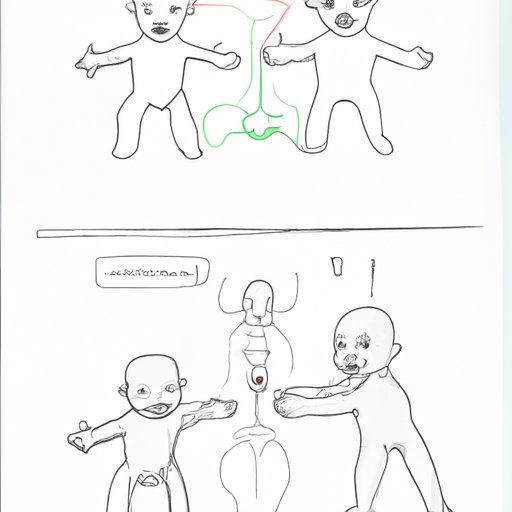Introduction
Drawing has long been a popular form of artistic expression and communication. From cave paintings to modern-day illustrations, people of all cultures and ages have used drawing to convey their thoughts, emotions, and ideas. Drawing is not only a subjective form of self-expression, but it can also provide various benefits such as stress relief and improved focus. With this article, we aim to help beginner artists improve their skills and enjoy the numerous benefits of drawing.
The Beginner’s Guide to Drawing: Tips and Techniques to Get You Started
Before you can start drawing, you need to have the right tools. Firstly, you will require a good quality drawing pencil set with various grades of pencils from 6H to 6B to help you create different tones. You will also need good quality paper. Practice drawing sheets or cartridge paper is best as it is smooth and thin to work with. Erasers, sharpeners, and blending stumps will also come in handy.
Once you have your supplies, you can start with the fundamentals. The most basic concepts are shapes, proportion, value, and texture. Shapes provide the foundation of a drawing and learning how to draw basic shapes like a circle, square, and triangle will help you when you start drawing complex subjects. Proportion is another fundamental concept that will help you maintain balance and realism in your drawings. Value refers to the shade of pencil you use, and it helps to give depth and 3D effect to drawings. Texture helps to bring out the mood of the subject matter; creating a rough texture will depict rough surfaces while creating a smooth texture will denote a smooth surface.
Once you have learned the basic concepts, it’s time to start practicing. Some easy exercises include drawing simple objects, copying easy pictures, and making abstracts. This will help beginners break down the concepts and techniques into easy-to-digest elements, and by practicing these exercises, you will improve the muscle memory of your drawing hand and develop your artistic eye.
Breaking Down the Basics: A Step-by-Step Tutorial for Learning to Draw
A step-by-step tutorial is an in-depth guide that provides necessary guidance and eases the process of drawing for beginners. The tutorial is organized in a way that the drawing is broken down into easy-to-digest stages that the learner can follow through comfortably. Start with a 3D basic shape like a sphere, cube, and pyramid. Draw the outlines by following the tutorials’ guidance, then create the shadows and blend in to provide depth. From there, you can move into drawing more complex shapes like flowers and bowls. The importance of this tutorial is that it takes you through each step in detail and with practice, enables you to grasp the concepts faster.
The Benefits of Drawing: How Picking Up a Pencil Can Improve Your Life
Drawing is not only a fun activity but a therapeutic one that can enhance your well-being in several ways. Studies have shown that drawing can provide various benefits to an individual. One of its significant benefits is stress relief. By focusing our mind on the drawing and repetitive strokes of the pencil, we can relax and calm our minds. Drawing can also improve our cognitive thinking abilities and memory retention. By combining the right and left hemispheres of our brain, we become better problem solvers and logical thinkers.
Drawing Your Own Comics: Tips and Tricks from a Professional Artist
Drawing comics is fun but can be challenging, especially if you have a limited perspective. A professional artist in the comic industry can offer guidance and advice when it comes to drawing comics. The artist will share their techniques on how to create realistic characters, how to draw characters in action, and creating perspectives and background. Advice from a professional artist can help beginners overcome their limitations and improve their creative abilities.
Drawing for Kids: Fun and Easy Projects to Spark Your Child’s Imagination
Drawing can help children develop their motor skills, creativity, imagination, and cognitive functions. Drawing is also an excellent way to provide children with entertainment and help them relax and unwind. Simple drawing projects tailored to children like basic shapes, abstract art, fruits and animals. Encouraging children to take up drawing allows them to express themselves creatively while enjoying the benefits of improved hand-eye coordination and fine motor skills.
Conclusion
In conclusion, drawing is a skill that can be improved through continuous effort, patience, and guidance. It is an incredibly fulfilling way to express oneself, de-stress, and improve health. This guide has offered tips, techniques, tutorials, and fun projects, aiming to help beginners develop their skills and gain an appreciation for drawing. Whether you’re a beginner or an experienced artist, it’s never too late to learn something new and pick up a pencil to explore your creativity.
